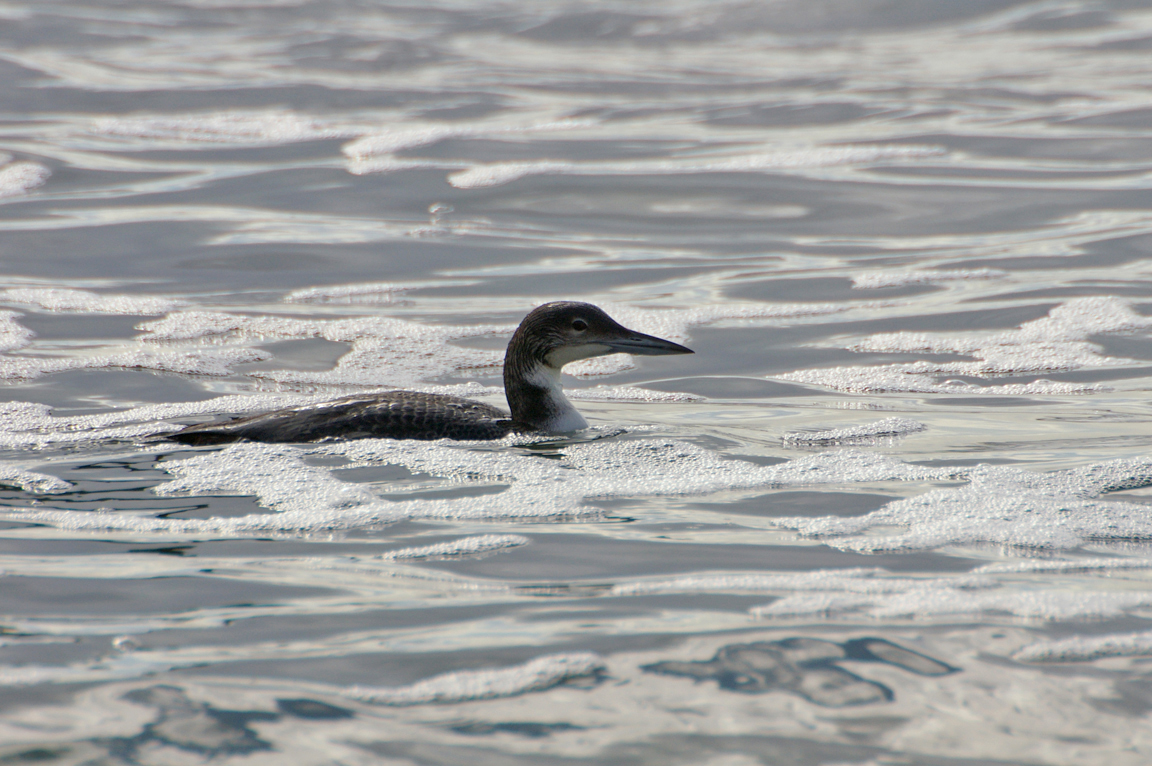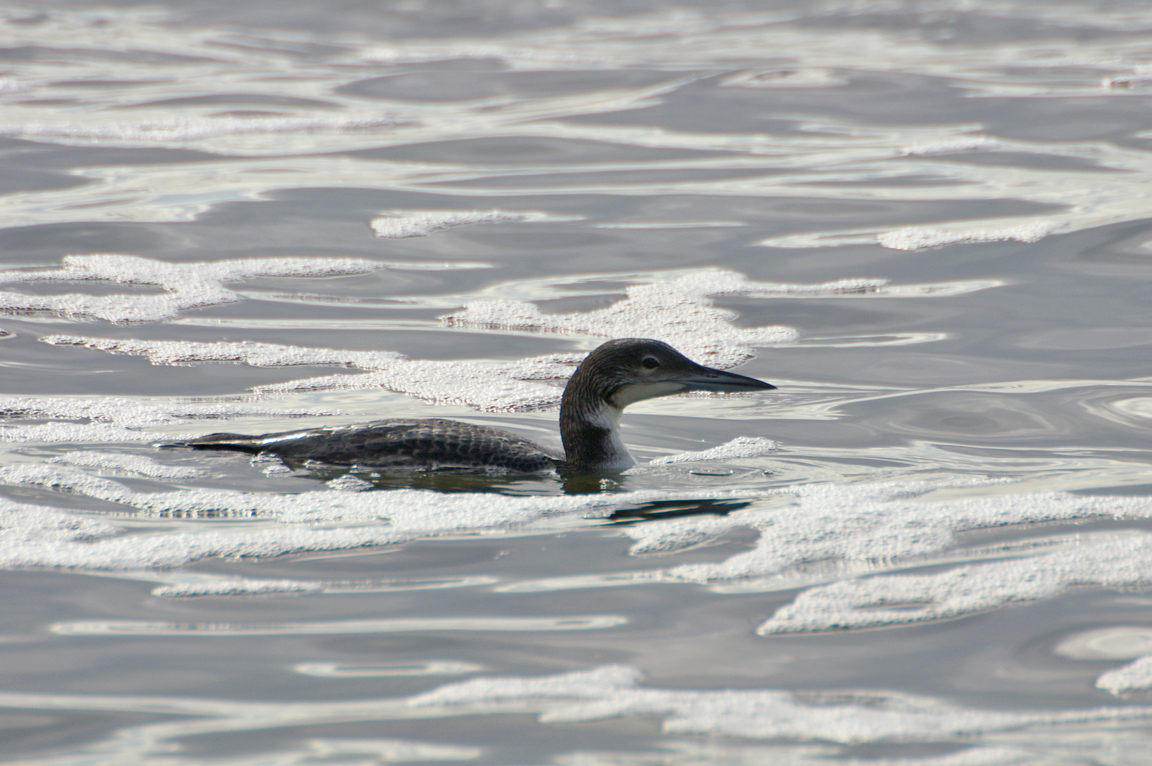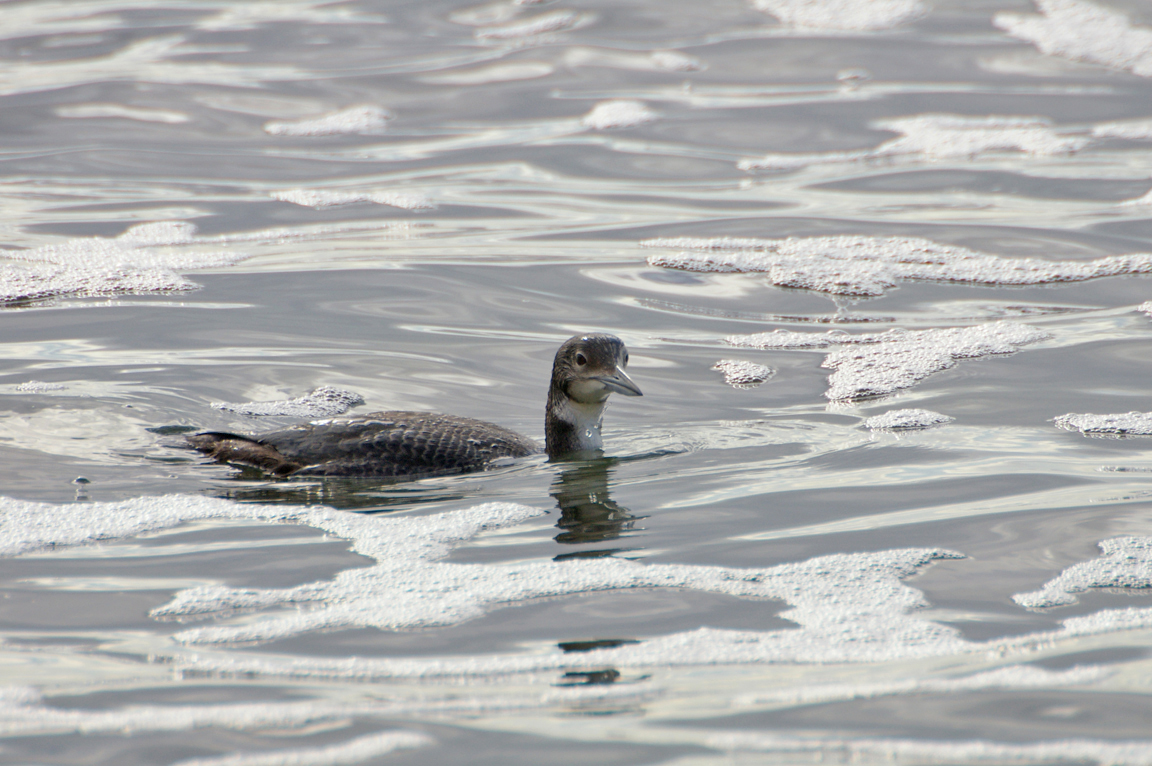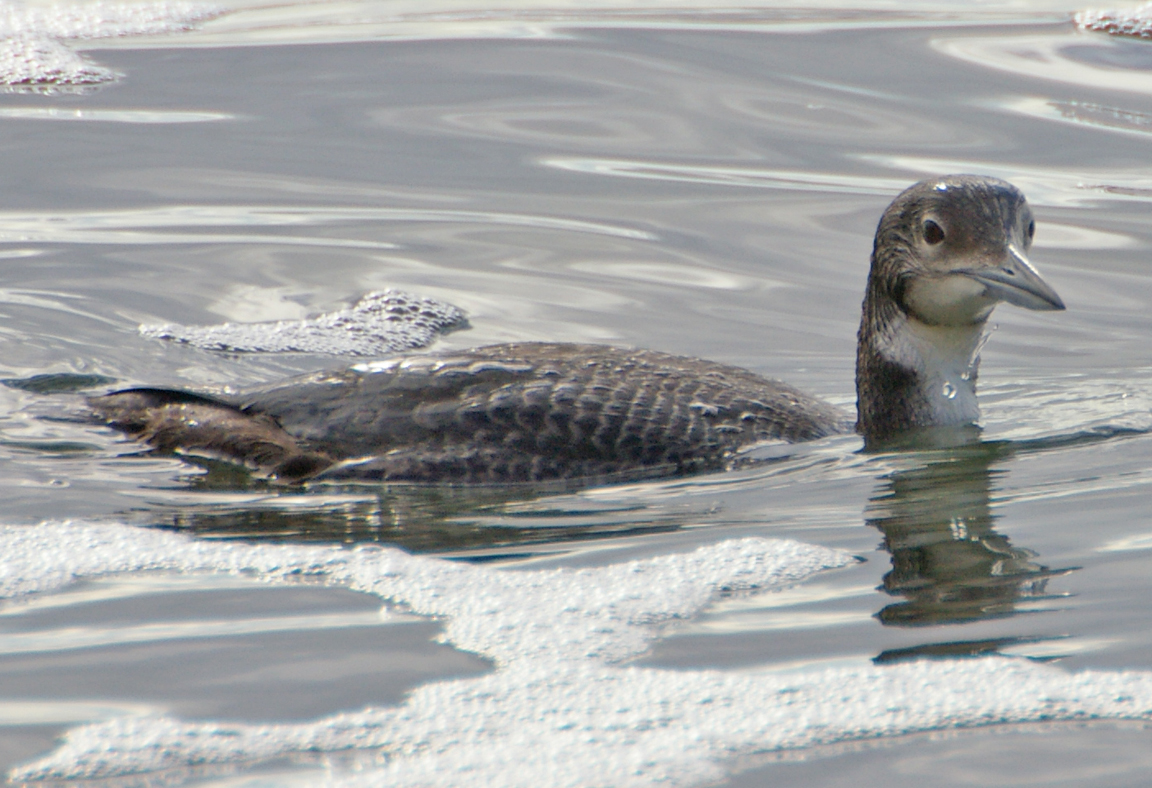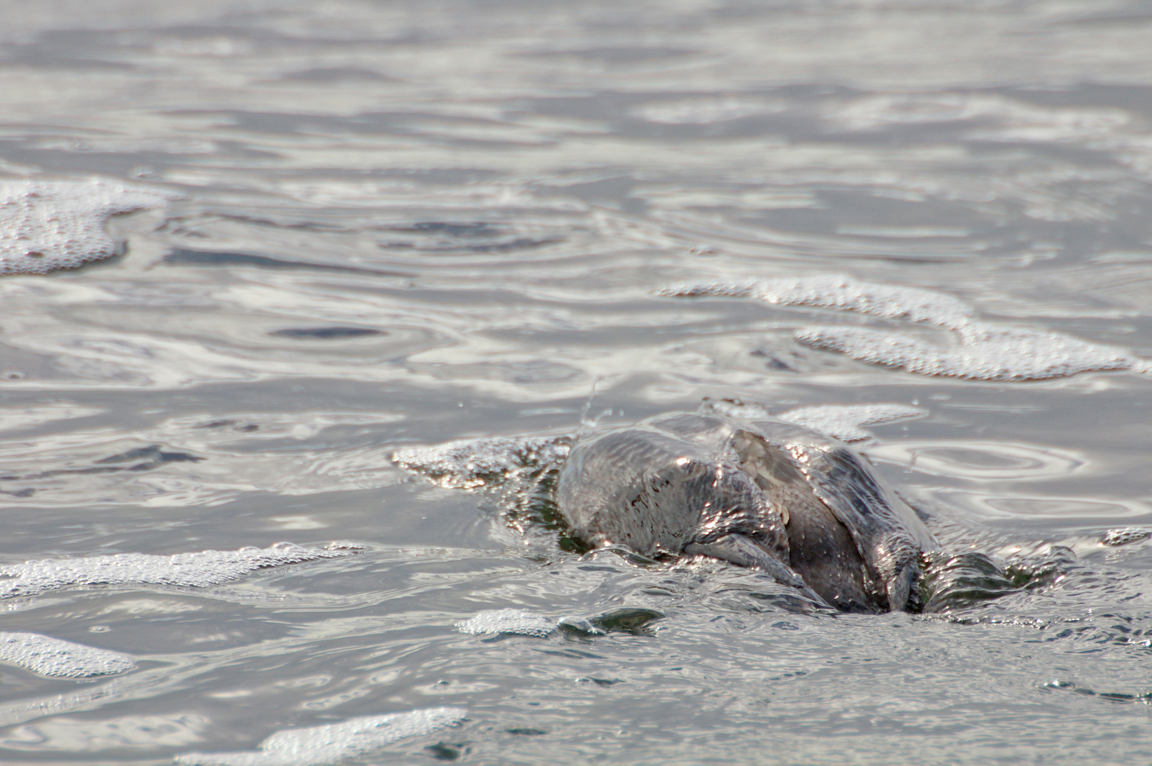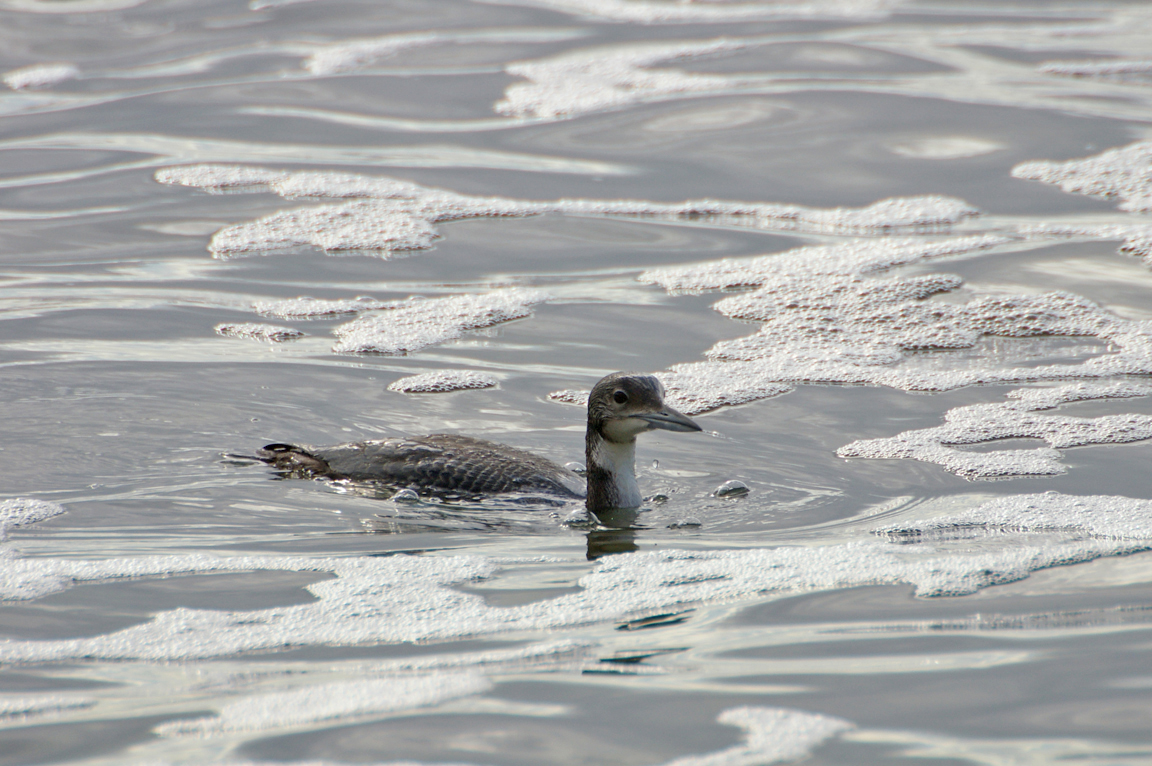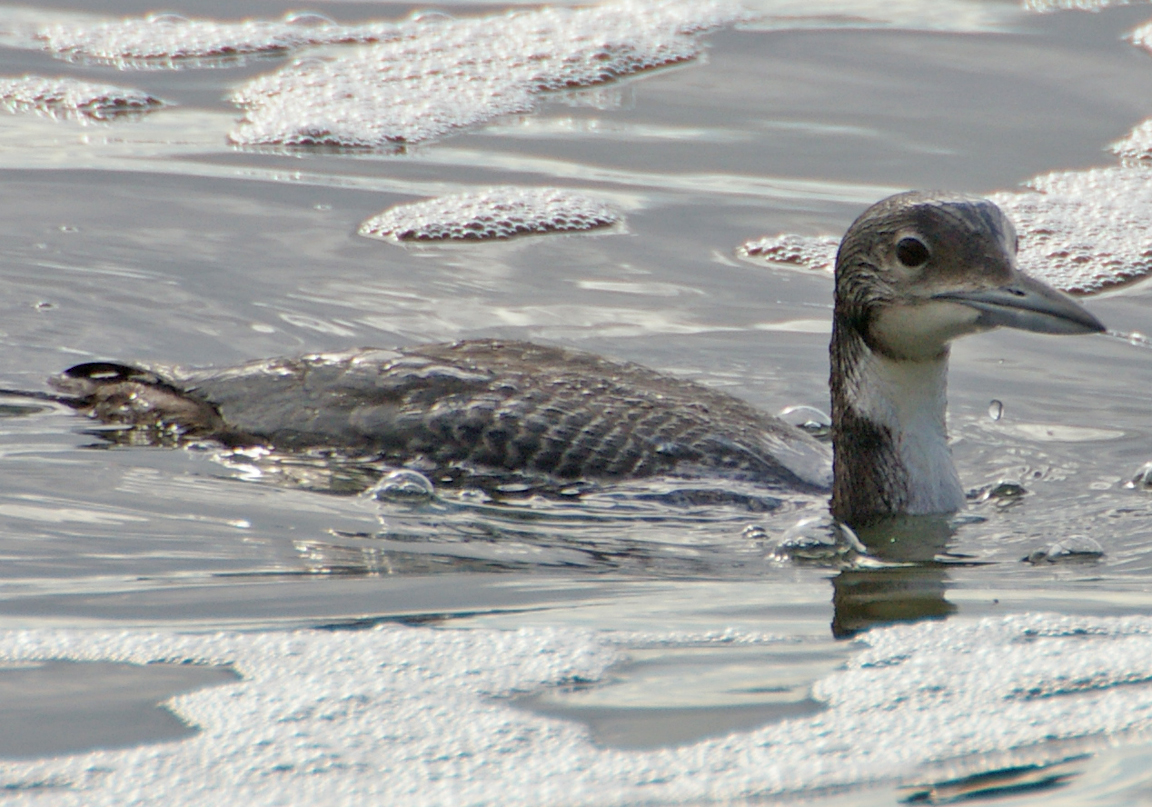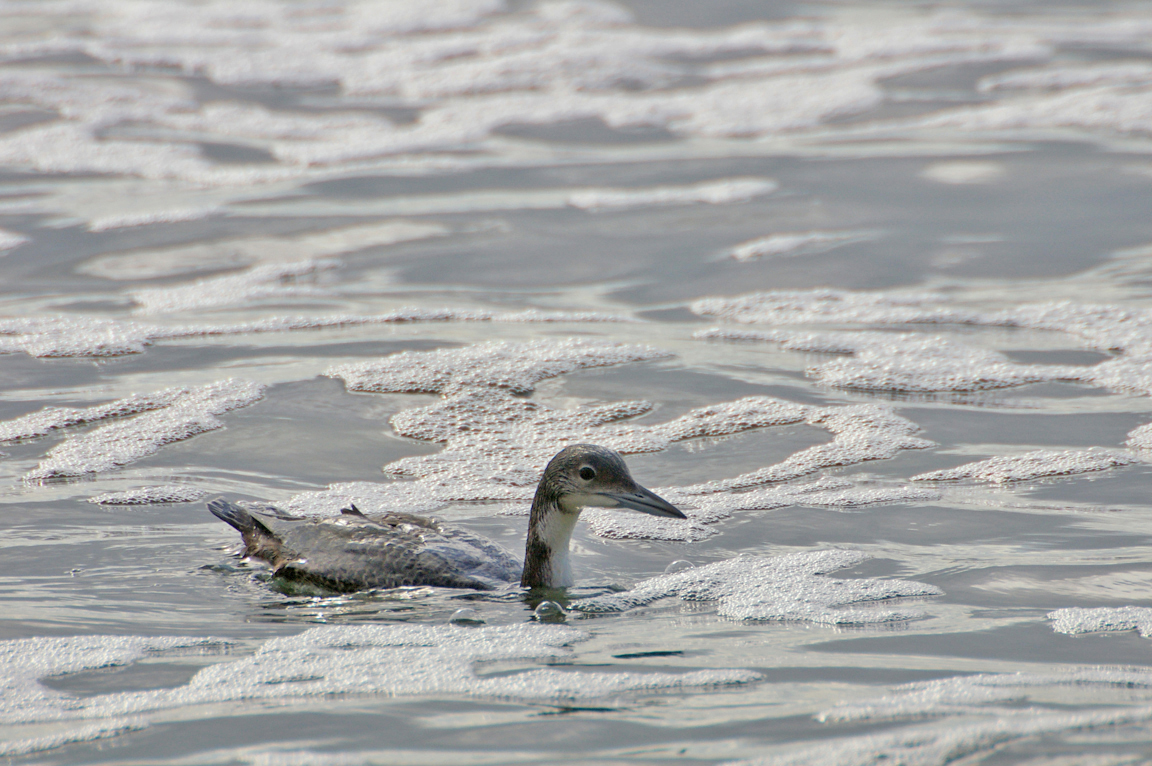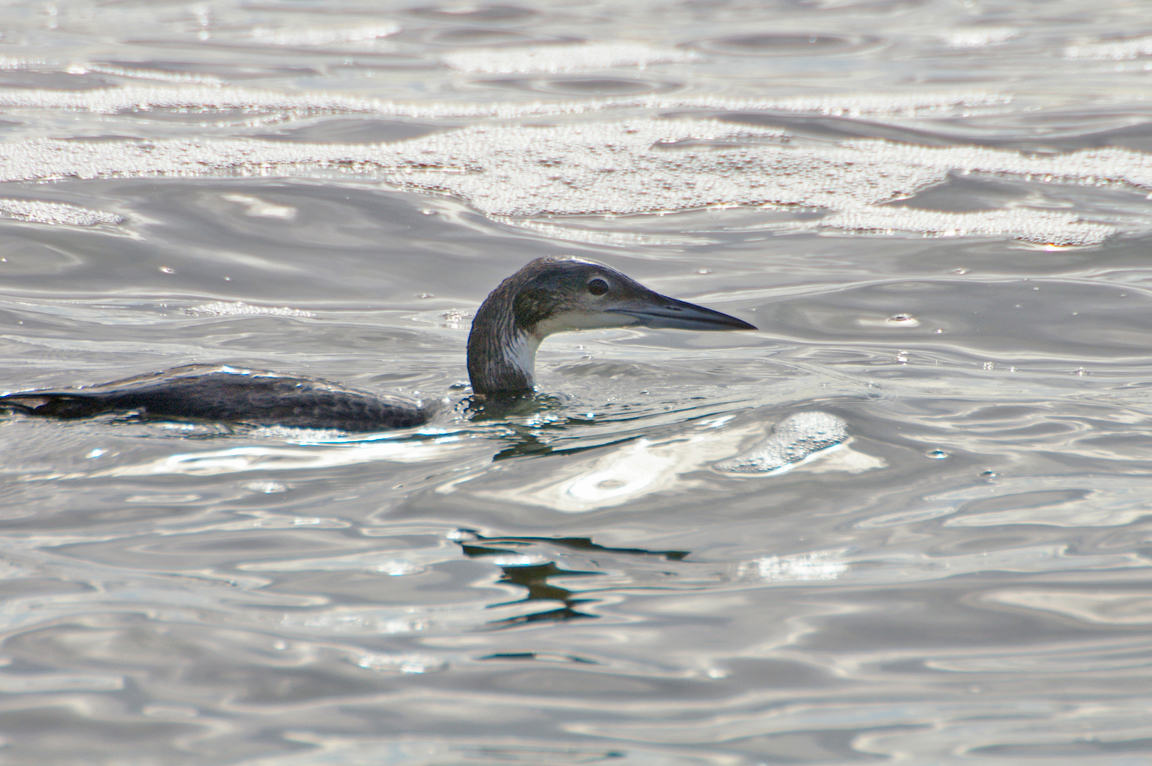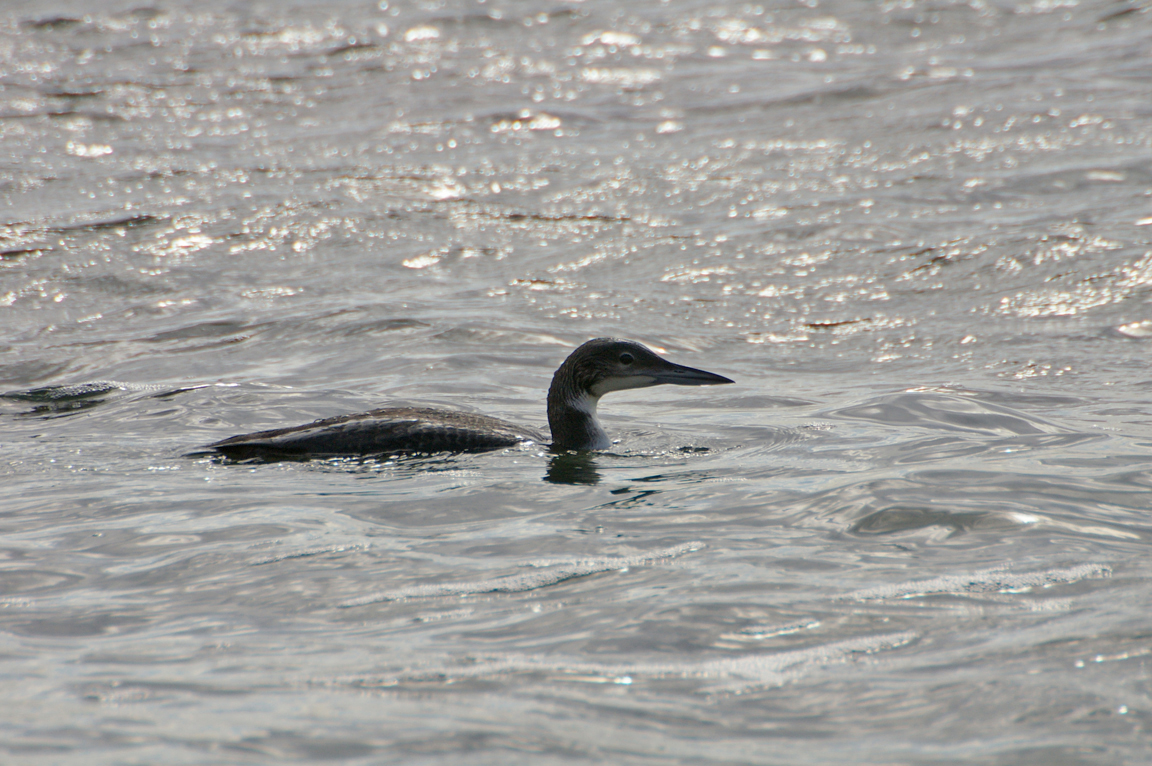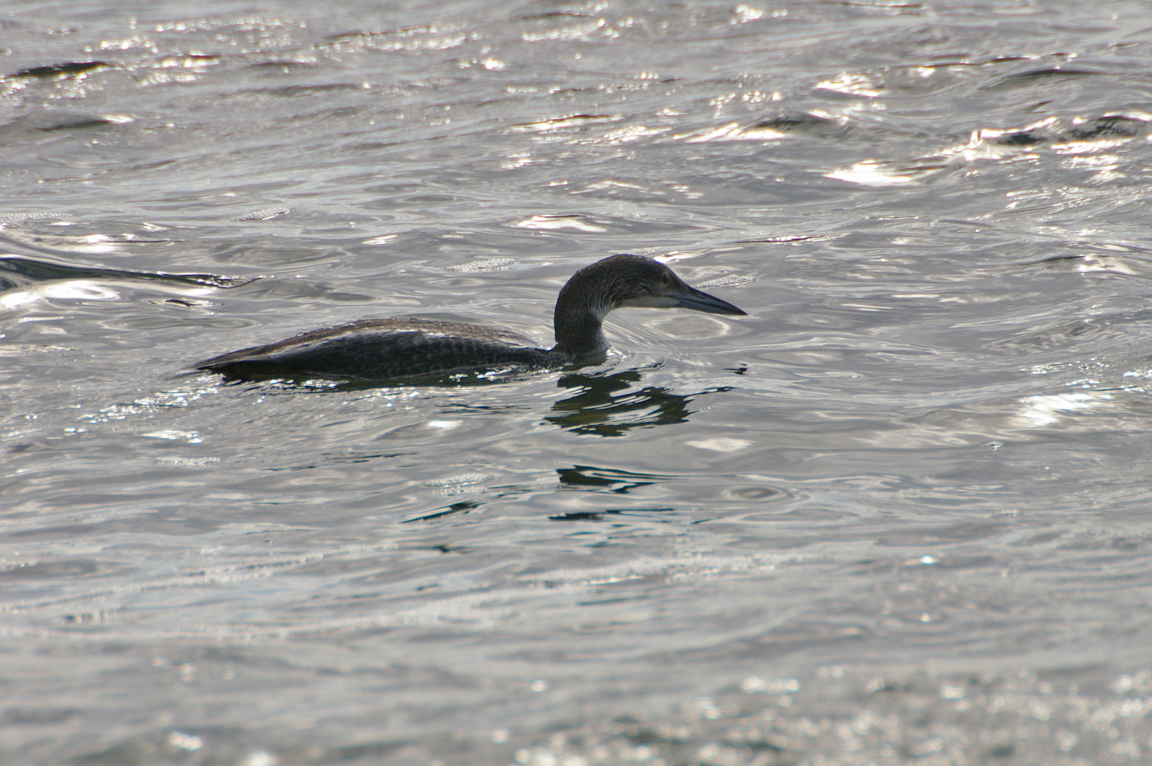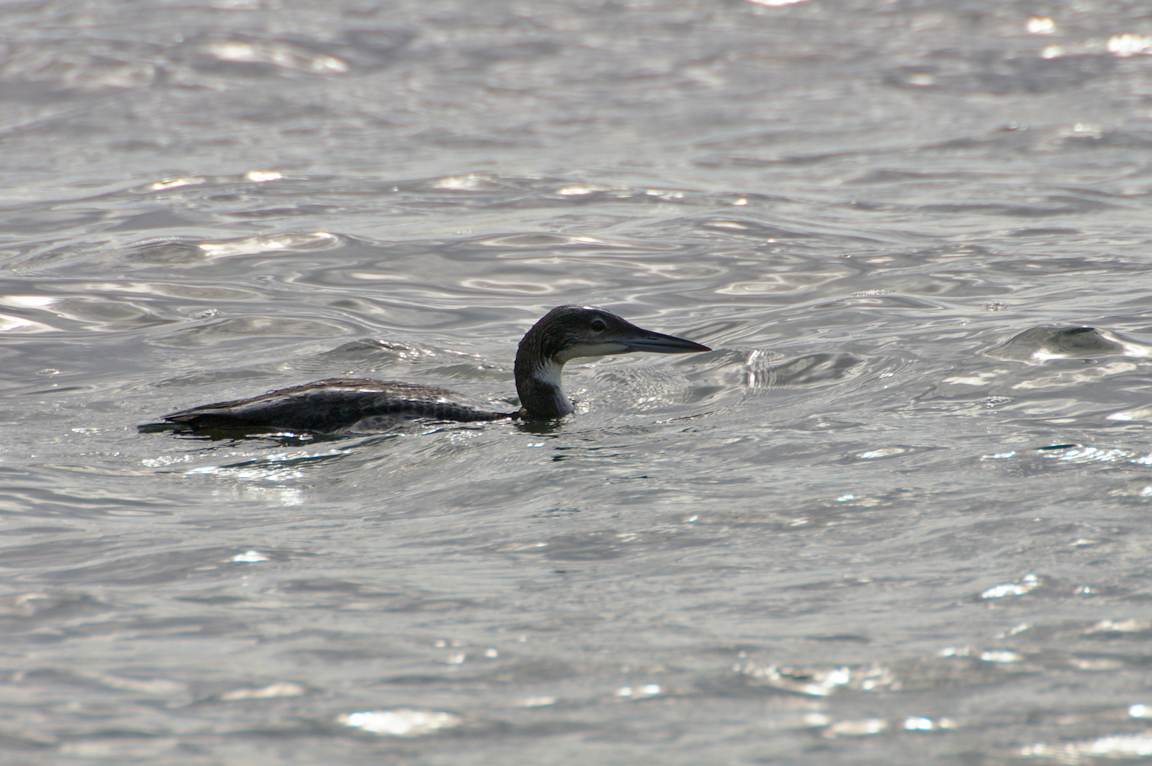|
|
|
 |
Common Loon
|
| Gavia immer | |
The eerie yodel of the Common Loon is a symbol of the wild North. The territorial call of the male loon can be heard from lakes across Canada to the very northern United States.
Interesting Information
-
The Common Loon swims underwater to catch fish, propelling itself with its feet. It swallows most of its prey underwater. The loon has sharp, rearward-pointing projections on the roof of its mouth and tongue that help it keep a firm hold on slippery fish.
-
Migrating Common Loons occasionally land on wet highways or parking lots, mistaking them for rivers and lakes. They become stranded without a considerable amount of open water for a long takeoff. A loon may also get stranded on a pond that is too small.
-
Loons are water birds, only going ashore to mate and incubate eggs. Their legs are placed far back on their bodies, allowing efficient swimming but only awkward movement on land.
-
The Common Loon is flightless for a few weeks after molting all of its wing feathers at the same time in midwinter.
Description
Adult Description
-
Adult Description
- Large waterbird.
- Long pointed bill.
- Long body slopes to rear.
- Sits low on water.Length Range: 71-91 cm (28-36 in)
- Weight: 4126 g (145.6 oz)
- Size: Large (16 - 32 in)
- Color Primary: White, Black, Sheen or Iridescence
- Underparts: White
- Upperparts: Checkered black and white.
- Back Pattern: Spotted or speckled
- Belly Pattern: Solid
- Breast Pattern: Solid
Sex Differences
Sexes similar.
Immature
Juvenile similar to nonbreeding adult, but head more uniformly dark with more distinct edge between light underparts and dark upperparts. Back feathers edged with light, giving a scaled appearance. Bill paler, but still with dark upper edge.
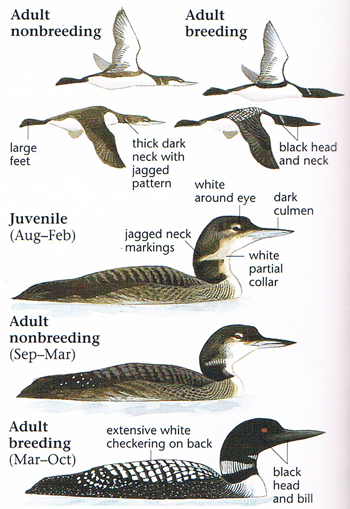
Photo taken from: The Sibley Field Guide by David Allen Sibley
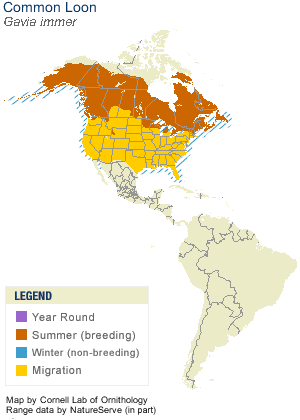
© 2003 Cornell Lab of Ornithology
|
Habitat |
|
|
Behavior |
|
Pursues fish underwater, grabs with bill. |
|
Food |
|
Fish; some other aquatic vertebrates and invertebrates. |
Taxonomy
| Kingdom: | Animalia |
| Phylum: | Chordata |
| Subphylum: | Vertebrata |
| Class: | Aves |
| Order: | Gaviiformes |
| Family: | Gaviidae |
| Genus: | Gavia |
| Species: | Gavia immer |
Similar Species |
|
|
Bird Sound |
|
Call a tremulous wail. |
|
Eggs look like this |
|
Photo taken from: ARCTOS Collaborative Collection Management Solution |
|
Bird Sound |
|
Call a tremulous wail. |
